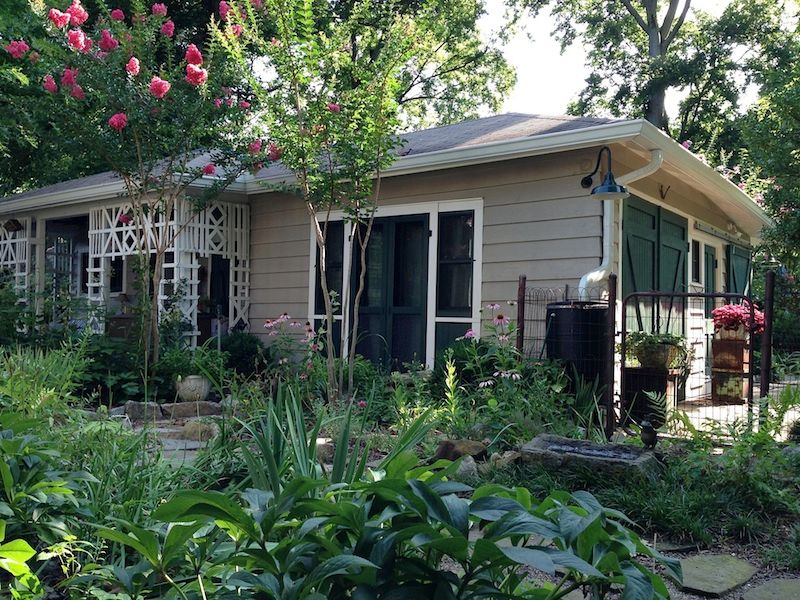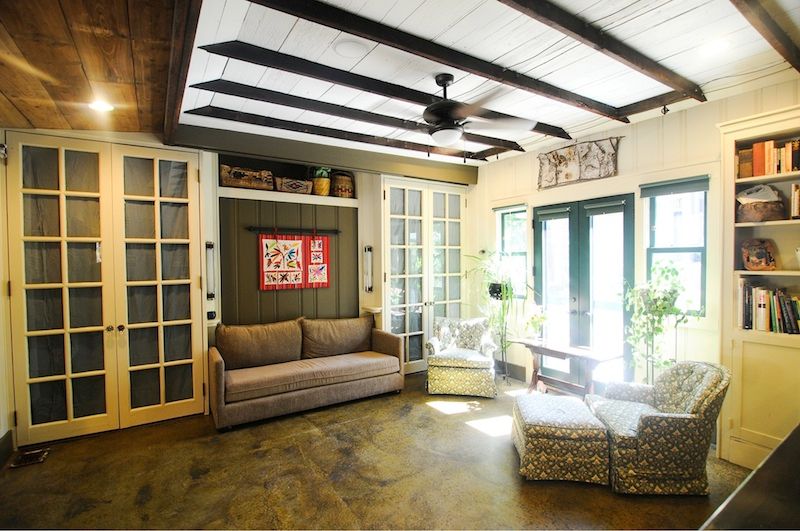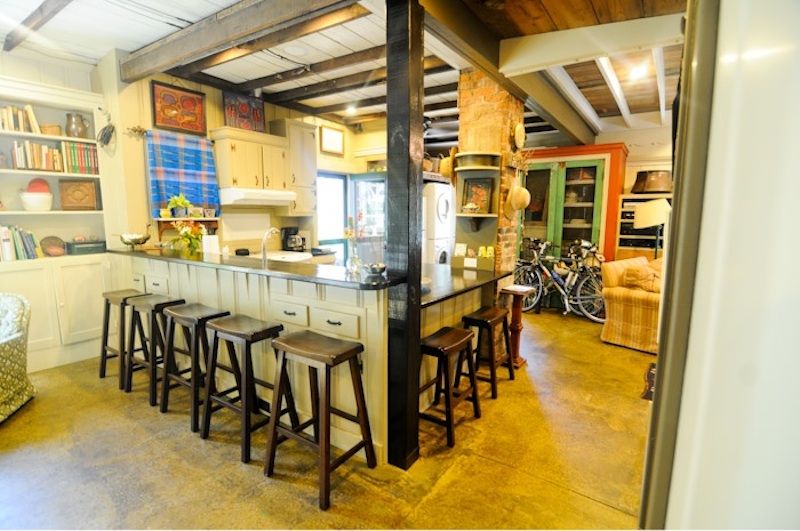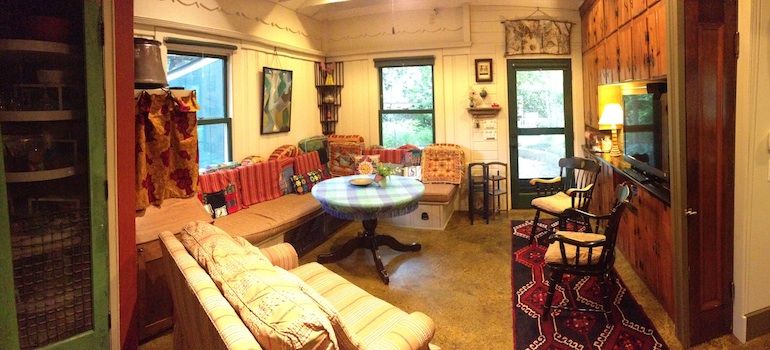
The Little House seamlessly integrates historic preservation and green building practices in the transformation of a severely dilapidated garage/servant’s quarters into highly flexible space used for entertaining as well as a vacation rental.
The tiny (750 sf) 1920 cottage stands on a ¼ acre corner lot whose primary structure is a spacious bungalow in Nashville’s Elmington Park neighborhood. When the current owners purchased the property in 1992, they stabilized and re-roofed the garage, which stood as shell space until renovation commenced in 2009. Their initial purpose was to create a housing option for aging parents, which subsequently proved to be unneeded.
The potential for elderly inhabitants, however, led to a rehab plan incorporating “universal design” (aging-in-place) principles in the interior and landscape design. Other renovation goals included a flexible floor plan accommodating multiple functions, a building process utilizing recycled materials and generating minimal waste to produce an energy efficient, stand-alone residence with landscaping that provides food for the family.
That these sustainability objectives have been achieved is demonstrated by the Little House’s certification as LEED Platinum in 2011-one of the first historic residences in the nation so designated-and the project’s receipt in 2012 of the “Green Star Award, Best of the Best: Residential” from the U.S. Green Building Council’s Middle Tennessee Chapter.
During the renovation process, the owners realized that the Little House could serve as a demonstration model for others grappling with an apparently “throwaway” building of questionable utility and miniscule proportions. To that end they created a website to inform and inspire that has been featured in many online and print publications. They have opened the Little House to students, civic groups, design and construction professionals and the general public for workshops, classes, presentations, and tours focusing on sustainable construction and landscaping. The Little House stands today as a national example of how the historic fabric-not just the “starchitecture”-of a streetcar suburb turned urban neighborhood can be preserved by repurposing an outbuilding that a less adventurous and resourceful homeowner would have demolished.



























